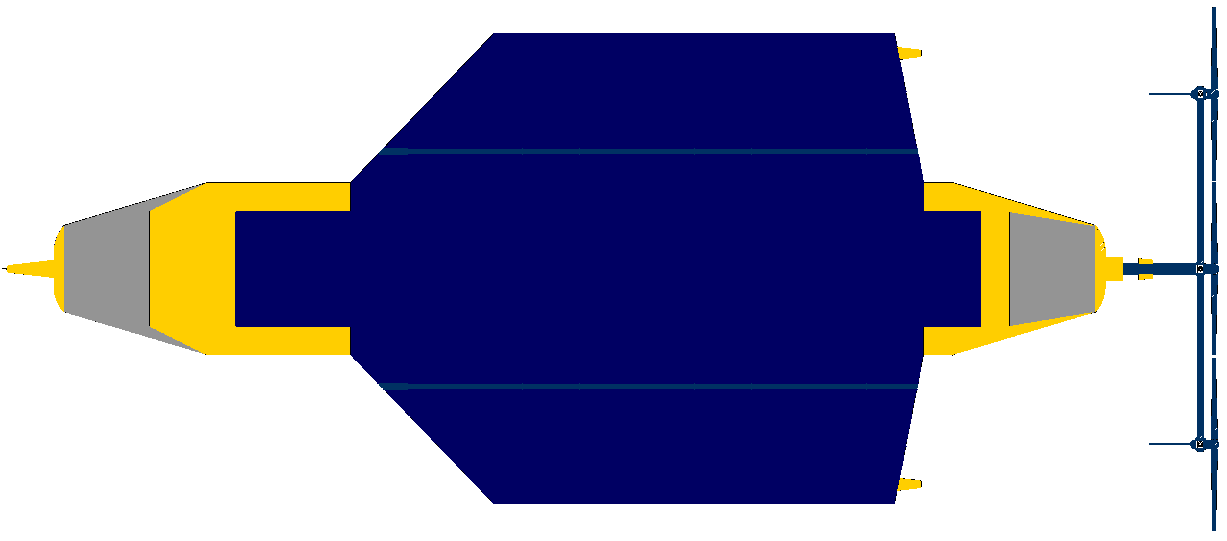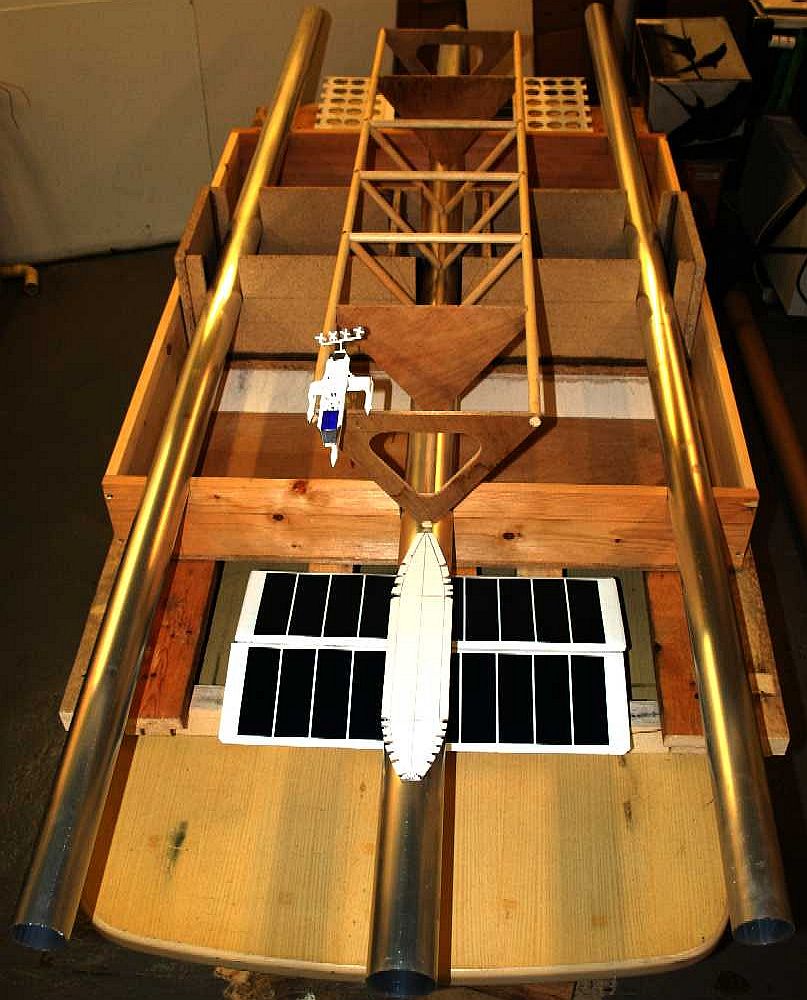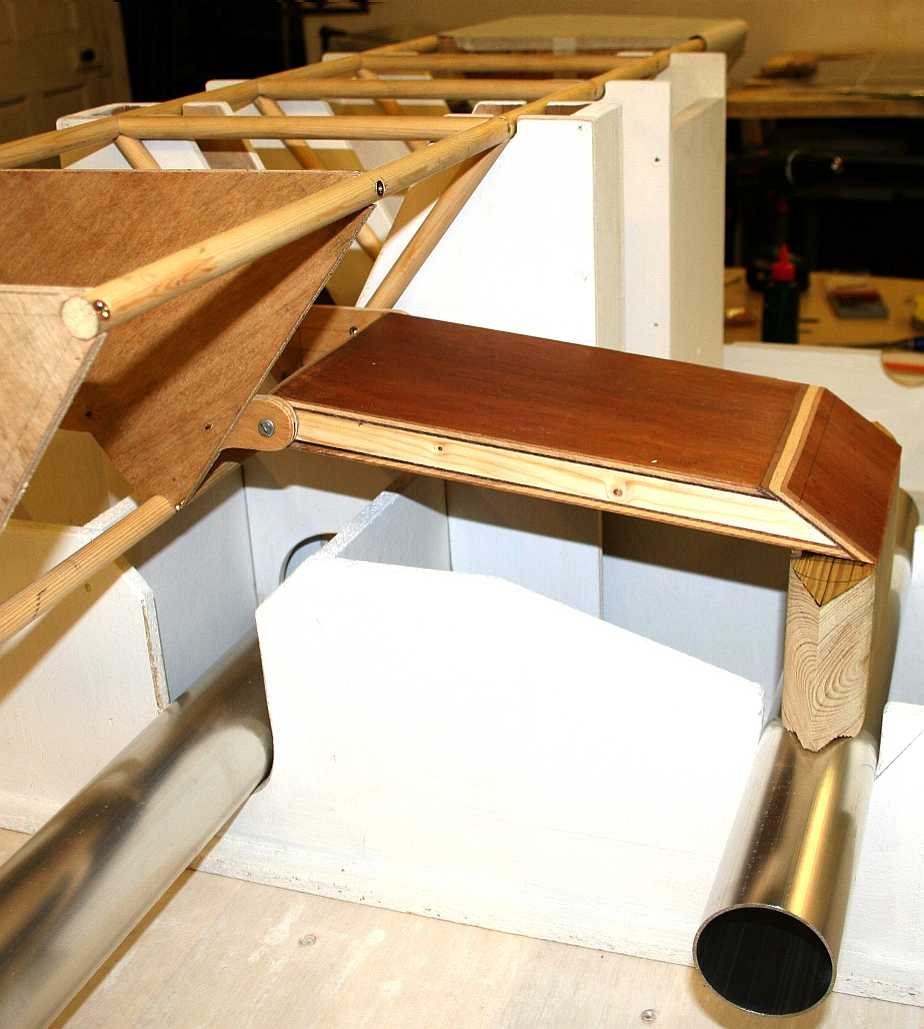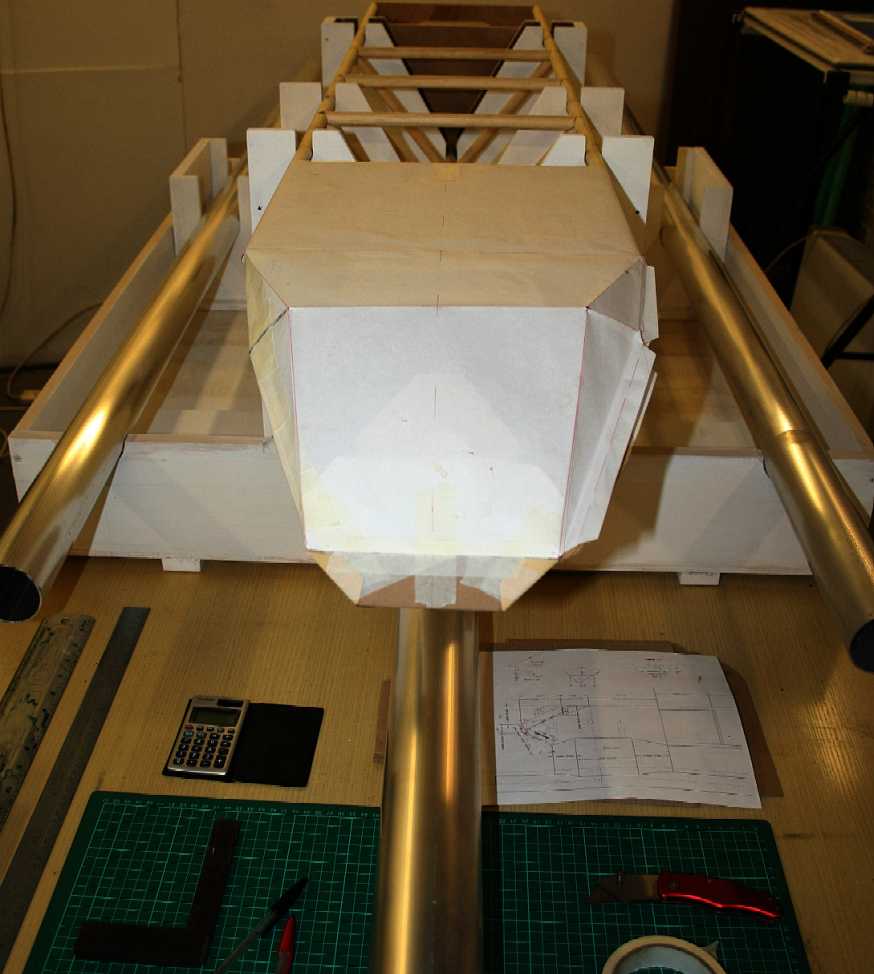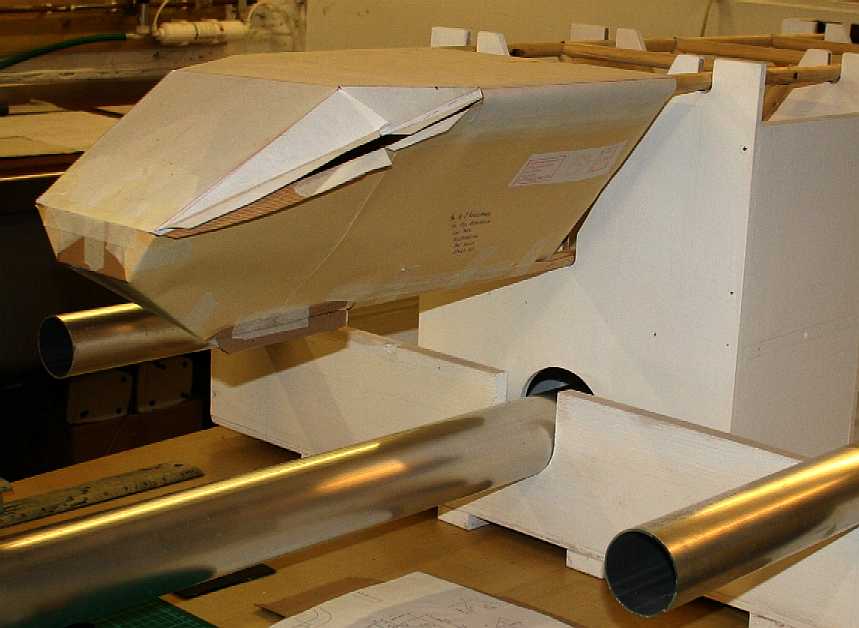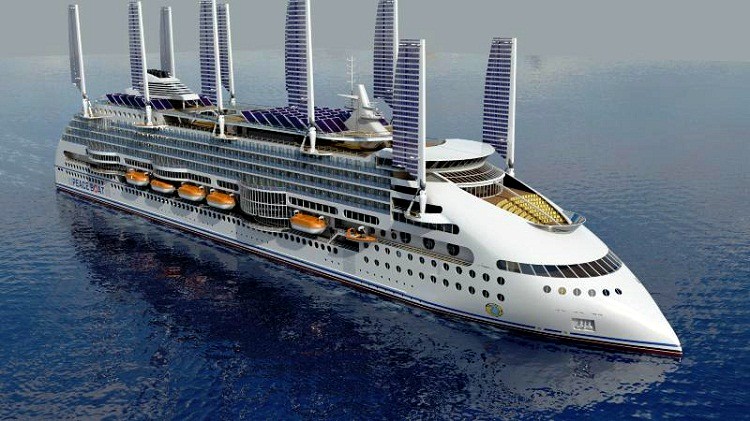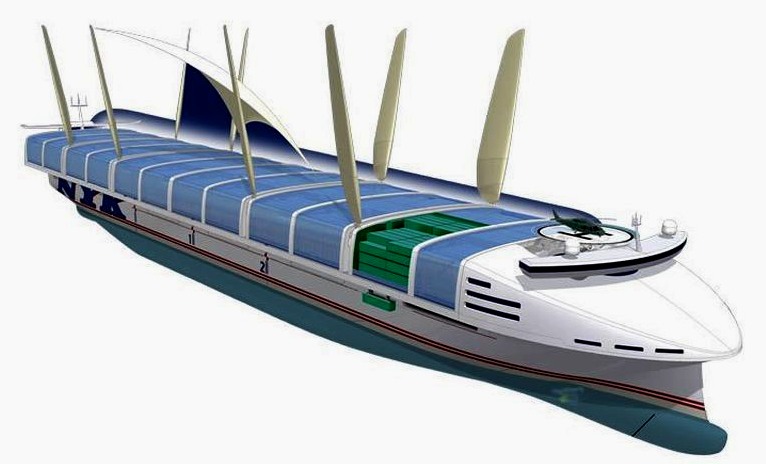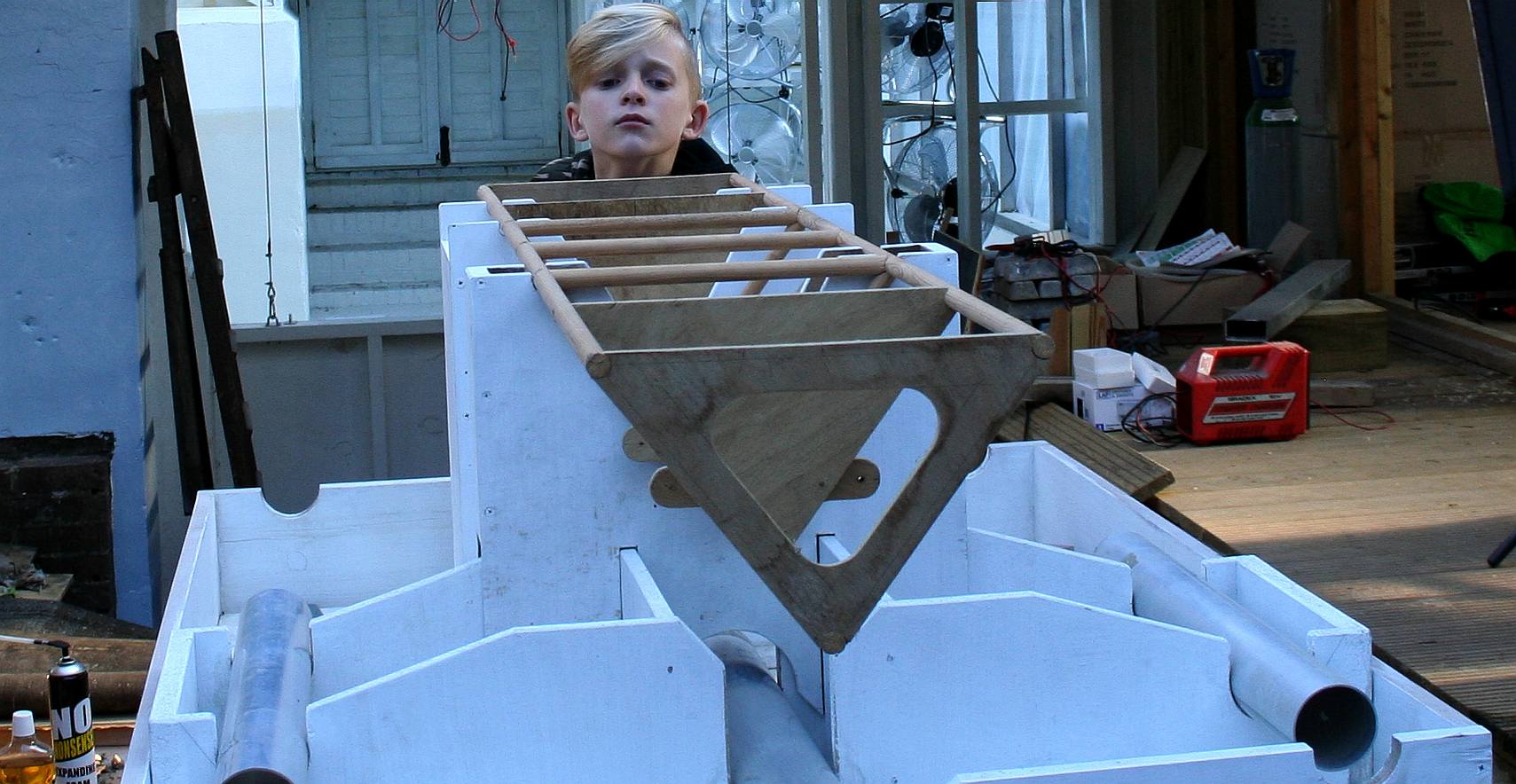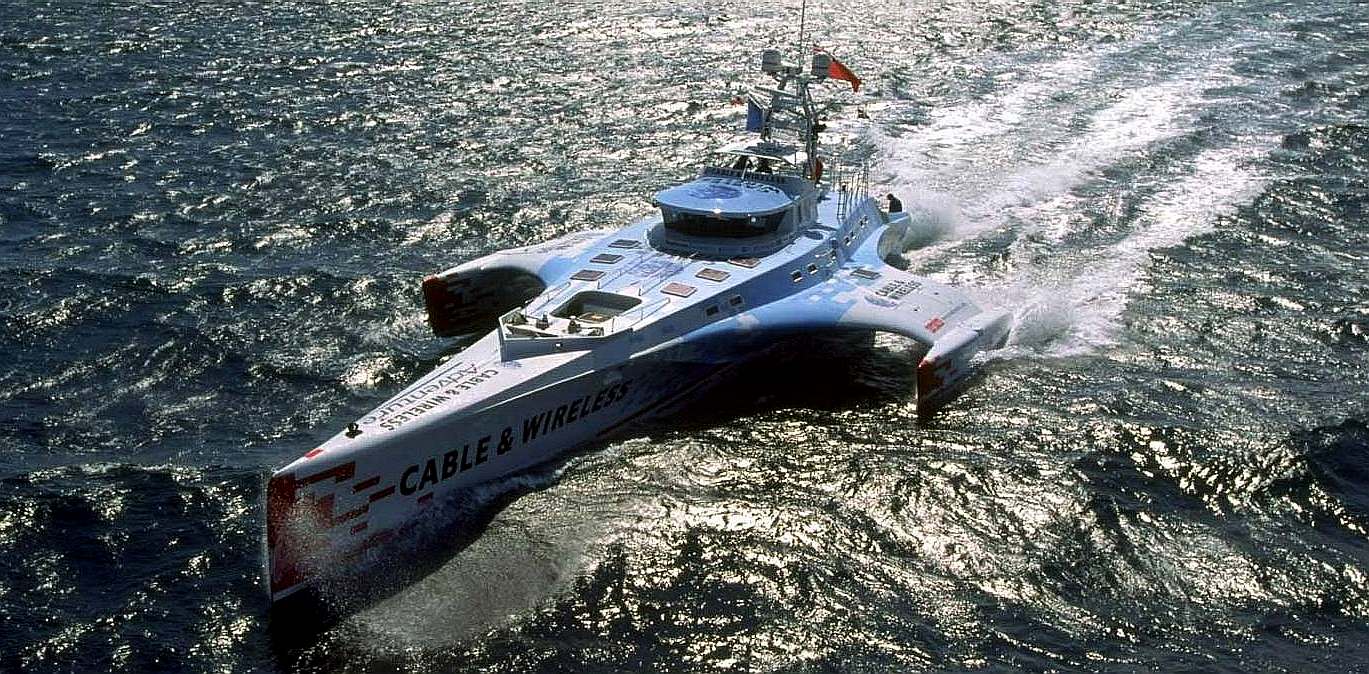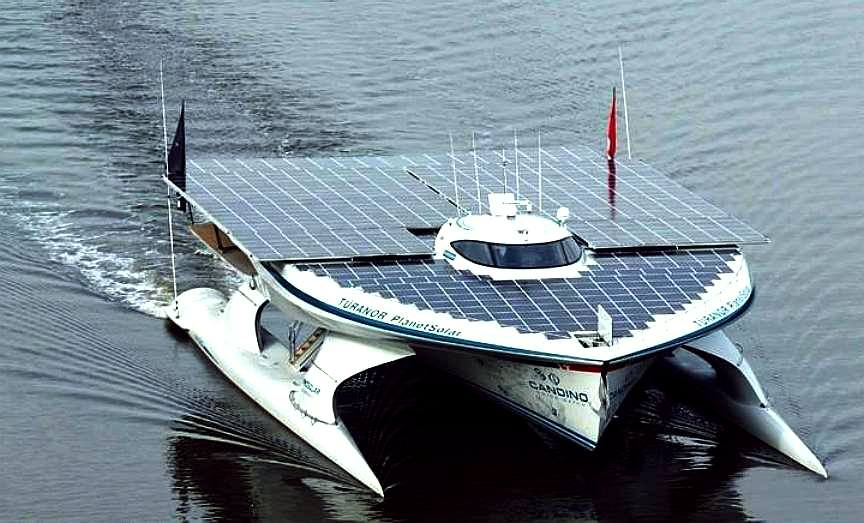|
Elizabeth Swann SPECIFICATIONS
Please use our A-Z INDEX to navigate this site where page links may lead to other sites
|
|||||||||||||||||||||||||||||||||||||||||||||||||||||||||||||||||||||||||||||||||||||||||||||||||||||||||||||||||||||||||||||||||||||||||||||||||||||||||||||||||||||||||||||||||||||||||||||||||||||||||||||||||||||||||||
CLIMATE CHANGE CHALLENGER - The hull (plan view) is shown here in high visibility machine yellow, though is likely to be white in service. The un-shaded solar panels dominate the deck and wings. The wind turbines shown will be a single large unit for the sake of simplicity. A dual boom system is being tested at this time (July 2019) in connection with proposed zero carbon workboats.
YACHT TARGET WEIGHTS - FULLY SCALE-ABLE
TEMPLATE - An alloy space-frame is one way to keep the mass of the deck low. A trimaran design is favoured, that is actually a stabilized monohull when running, much like the Cable & Wireless Adventurer below. This reduces running drag, meaning more speed from lower horsepower. The ideal is a cruising speed of 10 knots and above. Even if the displacement creeps up by 5 of more tons, we should still be in the right ballpark to advance the art of low carbon shipping.
DRAFT SPECIFICATIONS - WORK PACKAGES - BUDGETS
DIMENSIONS - The Elizabeth Swann (Climate Change Challenger) is 40.3 meters long (131ft) x 16.4 (153ft) wide and 6.2 meters (20ft) height above water level, with a draught of 1.69 meters (5.5ft).
HULL MATERIAL - The Swann is to be built of 5083 aluminium alloy. The reason for this choice of material over other more exotic materials like composites, is the ability to withstand knocks and the ease of repair at sea with portable welding equipment. Marine alloys are also economical in production and 100% recycle-able. This alloy does not corrode in seawater and does not need painting.
HELM - The Swann has two helms, one enclosed in a forward cabin that includes a galley and a second open air helm aft.
BERTHS - For the world record attempt a crew of six will be berthed in the rear cabin area. After the attempt the yacht will be refitted
POWER - The Swann will carry three photovoltaic arrays totaling 334 square meters in area, two of which arrays track solar energy as the sun rises and sets. She will also carry at least one wind turbine to supplement the PV cells to harness energy at night or during the day when the sun is not shining, particularly to take advantage of trade winds and currents.
At this time the size and configuration of the wind turbine is the subject of 1/4 scale testing on a land vehicle. Initially, the specification was for multiple turbines, but this could now be reduced to one 20kW unit until experiments are completed to allow further development. The turbine is mounted on a boom that hydraulically raises the unit higher into the wind for more power (provided there is no shading of the solar panels) and physically furls the blades in storm conditions to prevent damage, or for convenient sailing under bridges. See the useful comparison table below between the Swann's draft spec and PlanetSolar:
RESERVE - A generous battery storage bank provides up to 3 days of energy reserves to maintain headway in adverse conditions.
PROPULSION - Is by dc synchronous electric motors and conventional high efficiency propellers.
NAVIGATION - The vessel is to be fitted with an autonomous navigation system based on an autopilot and awareness equipment such as lidar, sonar and optical instruments (eyes). Ideally, optimal (green lane) course keeping will be satellite guided/monitored to take advantage of trade winds and currents wherever practical.
DISPLACEMENT - The displacement is 25 metric tons + a reserve buoyancy of 10 tons.
COMMUNICATIONS - Satellite geo-data streaming, radio and weatherfax.
PROJECT TEAM - Click on the link to see the UK team. Details of European partners will follow a successful bid and publication of the project.
BY DESIGN - You can see from the comparison table above that the Swan has roughly 3 times the power to weight ratio, but it is not that on its own that improves transit speeds - it is the design of the hull with reduced hydrodynamic drag - coupled to a weight saving configuration to support solar and wind energy harvestings.
TRANSFERABLE TECHNOLOGY - The design of the Climate Change Challenger might be adapted to Cargo, Container, Cruise and Ferry designs, without needing to radically alter port facilities. The designs above are not representative of adaptations of the concept, but serve to illustrate the thinking of other design houses.
RECORD "SUNSHINE" ROUTE
CLIMATE CHANGE CHALLENGE - The above table illustrates one of the most likely ocean awareness expedition routes, known as the 'Sunshine Route,' showing the time elapsed in days for 7 knots average cruising speed, including times for 5 and 6 knot averages - allowing for 10% downtime and 36 days in ports. Hence, although the objective is to reduce the current solar circumnavigation record from 584 days, the event in not an outright non-stop yacht competition in the offshore racing sense. It remains to be seen how accurate such a prediction might be. In this table we only allowed 36 days for provisioning and PR but added a 10% contingency for servicing, that could be used for additional time in ports. As a Climate Changing event, performance is one of the main criteria, especially concerning the possibilities for a transition to low carbon shipping and the contribution this might make in combating global warming.
GREEN MACHINE - The Elizabeth Swan project has been waiting for a time when interest in eco transport is again high on the agenda. With the present climate emergency we believe that there is now a place for zero carbon shipping, including cargo, containers and cruise liners. This small yacht might help to set the wheels in motion in demonstrating combined solar and wind energy utilization.
CONTACTS
Cleaner Ocean Foundation Solar Studios BN271RF United Kingdom growth@blue-growth.org
LINKS & REFERENCES
http://www.blue-growth.org
STABILIZED MONOHULL - The diesel powered Cable and Wireless Adventurer was built for the purpose of circumnavigating the world in less than 80 days. This was successfully accomplished in July 1998 in 74 days, 20 hours, 58 minutes, traveling more than 22,600 nautical miles (26,000 miles or 41,855 km). This achievement set a new Guinness World Record for a diesel powered vessel. The nautical mile or knot, is a unit of speed equal to approximately 1.15078 miles per hour on land (1.852 km).
GUINNESS BOOK OF RECORDS - MS Turanor PlanetSolar (Switzerland) circumnavigated the world in a westward direction from Monaco in 1 year 7 months and 7 days from 27 September 2010 to 4 May 2012. We wonder why nobody has attempted to improve on this design, to challenge the record in the intervening seven years.
Please use our A-Z INDEX to navigate this site
|
|||||||||||||||||||||||||||||||||||||||||||||||||||||||||||||||||||||||||||||||||||||||||||||||||||||||||||||||||||||||||||||||||||||||||||||||||||||||||||||||||||||||||||||||||||||||||||||||||||||||||||||||||||||||||||
|
This website is provided on a free basis as a public information service. copyright © Climate Change Trust 2019. Solar Studios, BN271RF, United Kingdom.
|
